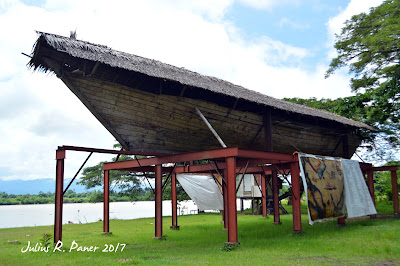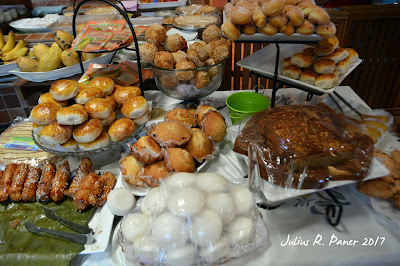Butuan City is a familiar destination to me as it serves as access
point to major tourist attractions in Mindanao such as Cagayan de Oro City,
Siargao Island, Bucas Grande Island and even Camiguin Island. For countless
times I have been to this place, my first one was year 2006 when I participated
a minor climb along with local mountaineering friends Joyjie, Sato and Patrick
(I hope we could do some sort of a reunion climb soon guys). As a transient
location I have yet to discover the entire city and never been to its significant
sites, most of which I heard of having colourful history built during the
colonial time.
On June 5 and 6 I accompanied my good friend Meggy of a trip to Butuan
as she had several things to attend to in the city. Given with the distance of
Butuan from Davao City our visit was practically composed of 30 percent road
tripping. Somehow, the trip enabled me to trace the value of Butuan to the
overall historical path of the Philippines. Even then I already knew from Sato
that there had been disagreements as to where the first mass was conducted
because numerous informants circulated information that it was held in Butuan
and not in Limasawa island in Leyte. This kind of information only proved that
Butuan can be an ultimate historical tourism destination in the country.
In my constant trip up the extreme northern part of Mindanao I personally
observed that Butuan is a swampy city as characterized by the frequent occurrence
of ground flooding. The swamplands are interlocked with the waterways arising
from its coastal areas flowing through its major river system which is the
Agusan River. These geographic realities has made Butuan loose in terms of physical
infrastructure. Although it is CARAGA’s regional center, many opportunities on commercial
and even industrial investment can still be catered because it has still plenty
of vacant lots.
With our limited time in Butuan, we visited few but informative local
tourist spots within the city, all of them I suggest to be one of your worthy
stops also.
National Museum. This is
located within the heart of the city and is just walking distance away from the
city government center. The museum was constructed in early 1970s when local
government functionaries found out archaeological materials of pre-historic
boats locally termed as “Balangay” believed to have been existing in the 4th
to 13th centuries AD. At present, the museum exhibited photos of the
recent voyage of the Balangay around the Philippines and in some portions of
Southeast Asia. Other chamber of the museum saw a lot of Balangay relics.
Balangay Building Site. Over
at Barangay Bading is the building site of the replica of Balangay (Masawa Hong
Butuan) which is also being displayed in the area for public viewing opposite
the Agusan River.
Truly, the pre-historic Balangay boat has become a critical identity of Butuan City and it reaffirmed the fact that Butuan Bay was an integral part to the navigational circuit of the ancient times in the Philippines.
Footnote. For visiting guests, do not leave Butuan without dining in D’ Homemakers Café located along the Davao-Butuan highway in Barangay Ampayon. This hygienic restaurant offers mouth-watering dishes, all designed for Pinoy taste buds. They have variety of lutong-bahay dishes such as pinakbet, paksiw na isda, tinolang bisaya nga manok, tinolang isda to name a few. They also have local desserts that could be a good pasalubong item or an instant snack rations to satisfy your hunger in long travels.
Overnight Accommodation. Red Palm Suites is a fair option. It is located in Villa Kananga Road, Butuan City. The swampy nature of Butuan might have caused obnoxious odor to the water system of Red Palm suite, but overall it can be a good alternative.
Footnote. For visiting guests, do not leave Butuan without dining in D’ Homemakers Café located along the Davao-Butuan highway in Barangay Ampayon. This hygienic restaurant offers mouth-watering dishes, all designed for Pinoy taste buds. They have variety of lutong-bahay dishes such as pinakbet, paksiw na isda, tinolang bisaya nga manok, tinolang isda to name a few. They also have local desserts that could be a good pasalubong item or an instant snack rations to satisfy your hunger in long travels.













No comments:
Post a Comment